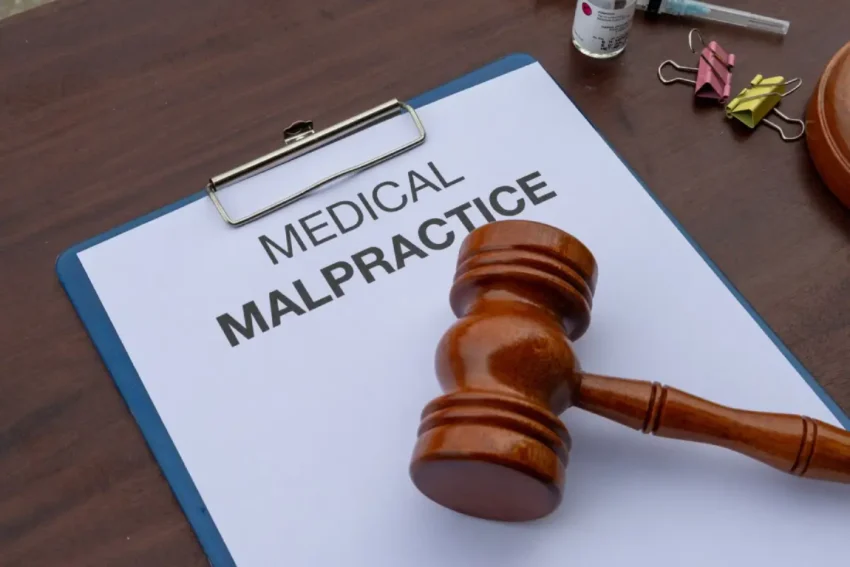What Is Considered Medical Malpractice? The Legal Basics

The relationship between a patient and a healthcare provider is built on a foundation of trust. Individuals place their well-being in the hands of medical professionals, expecting a certain standard of care and expertise. When that trust is breached due to a preventable error or negligent action, the consequences can be devastating, leading to severe injury, prolonged illness, or even death.
Such incidents form the basis of medical malpractice law, a specialized area of civil litigation designed to provide recourse and compensation for harmed patients and their families. Understanding the legal fundamentals of what constitutes malpractice is crucial for anyone navigating the aftermath of a suspected medical error.
Read on to learn more.
Contents
What is Medical Malpractice?
Medical malpractice arises when a hospital, doctor, or other healthcare professional, through negligence or omission, inflicts an injury to a patient. The negligence might stem from diagnosis, treatment, aftercare, or health management errors. It’s critical to recognize that an unfavorable medical outcome alone doesn’t equate to malpractice. Medicine is a complex science; not every treatment yields a positive result. The law distinguishes between a known risk of a procedure and an injury caused by a departure from accepted standards of medical practice.
Therefore, for those in Central Florida and other similar locations, consulting an experienced malpractice law firm in Orlando can be a critical first step in evaluating the validity of a potential claim. These legal professionals possess the necessary expertise to navigate the intricate web of statutes and regulations governing such cases.
The Four Essential Elements of a Medical Malpractice Claim
Four specific legal elements must be established for a case to be legally recognized as medical malpractice. The failure to prove any of these elements will likely result in the dismissal of the claim. The essential elements include:
The Existence of a Duty of Care
This element establishes that a formal doctor-patient relationship existed. In legal terms, the healthcare professional must have duty of care to the patient. This duty arises once a provider agrees to diagnose or treat a patient. For example, a surgeon scheduled for a procedure has a clear duty to the patient.
Breach of the Standard of Care
This is the core of any medical malpractice claim. It must be proven that the healthcare provider breached the established “standard of care” This is the type of care that a reasonably skilled or competent healthcare professional, with a similar background and in the same medical community, would have exercised under similar circumstances.
Causation
It’s not enough to prove that a medical professional made a mistake. The plaintiff must demonstrate a direct causal link between the provider’s breach of the standard of care and the patient’s injury with legal assistance. This involves proving two points: cause in fact and proximate cause. “Cause in fact” means that the injury would not have occurred “but for” the defendant’s negligence. “Proximate cause” means that the harm was a foreseeable consequence of the negligent act.
Damages
Finally, the negligence must have resulted in actual, quantifiable damages. Without damages, there’s no basis for a claim, regardless of how clear the negligence may seem. The law requires compensation for a measurable loss. These damages can be economic, such as past and future medical bills, lost wages, and loss of earning capacity. They can also be non-economic, which are more subjective and include compensation for pain and suffering, mental anguish, loss of enjoyment of life, and loss of consortium.
Common Examples of Medical Malpractice
Malpractice can manifest in numerous ways across various medical fields. Some of the most common scenarios include:
Misdiagnosis or Delayed Diagnosis
This occurs when a provider fails to promptly identify a condition or diagnoses a patient with a condition they don’t have, leading to incorrect or delayed treatment.
Surgical Errors
Examples include operating on the wrong site, performing the wrong procedure, leaving a surgical instrument inside a patient, or unnecessarily damaging organs or nerves.
Medication Errors
Providing incorrect drug prescription, administering an incorrect dosage, or failing to account for dangerous drug interactions are common forms of pharmacy and prescription error.
Anesthesia Errors
These mistakes can be particularly harmful, which include being unable to monitor a patient’s vital signs, administering too much anesthesia, or not properly reviewing a patient’s history for potential complications.
Childbirth Injuries
Negligence before or during delivery can cause serious injuries to both the infant and the mother.
Failure to Obtain Informed Consent
While not always a standalone claim, a doctor must explain a procedure’s risks, benefits, and alternatives. If a patient undergoes a procedure they would have refused had they been properly informed, and a known risk materializes, the provider may be liable for damages resulting from that risk.
The Legal Process and Protections for Providers

Medical malpractice laws are strictly regulated by state statutes, which typically include specific procedural hurdles. In many states, including Florida, a plaintiff must conduct a pre-suit investigation. This typically involves obtaining a verified written opinion from a qualified medical expert affirming that there are reasonable grounds to believe that malpractice occurred.
These laws also include protections for healthcare providers. A prominent example is the concept that medicine isn’t an exact science. Providers aren’t liable for errors in judgment if they exercised the accepted standard of care in reaching their decision. The legal system acknowledges that competent doctors can have differing opinions on a diagnosis or course of treatment.
Conclusion
Medical malpractice is a complex legal area centered on proving that a healthcare provider’s negligence directly caused a patient’s injury. It requires establishing duty, breach, causation, and damages. Given the intricate nature of these cases and the formidable resources of medical insurers as mentioned above, pursuing a claim necessitates the guidance of specialized legal counsel to protect the rights of injured patients and their families.



